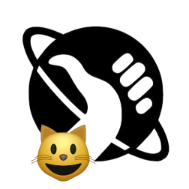-
Posts
10,715 -
Joined
Reputation Activity
-
 Pšenda got a reaction from Rickard in PLEASE FIX Affinity exporting quality image results
Pšenda got a reaction from Rickard in PLEASE FIX Affinity exporting quality image results
Of course, in the case of a raster image defined in pixels, DPI is completely irrelevant. It will only make sense if you use length units (cm, inch) as the document unit.
-
 Pšenda got a reaction from Westerwälder in end of affinity
Pšenda got a reaction from Westerwälder in end of affinity
It's interesting that in your unbiased and objective view, you didn't notice - who actually started the comparison and praise of Adobe here (it was definitely not anyone from "fanboys" - how you try to pigeonhole certain users who, in your opinion, are not critical enough of Affinity).
-

-
 Pšenda got a reaction from kat in AD2 artboard aligns to wrong artboard
Pšenda got a reaction from kat in AD2 artboard aligns to wrong artboard
FX effects are not visible in the bounding box - their effect on the size of the object is only applied when creating an Artboard or when exporting.
For example, this is Outer bevel or Emboss.
-
 Pšenda got a reaction from Ldina in Affinity Photo reads certain PNG files incorrectly, resulting in washed out colors.
Pšenda got a reaction from Ldina in Affinity Photo reads certain PNG files incorrectly, resulting in washed out colors.
-
 Pšenda got a reaction from kat in AD2 artboard aligns to wrong artboard
Pšenda got a reaction from kat in AD2 artboard aligns to wrong artboard
... alternatively, you have an fx on the circle that could also enlarge the object - for example Outer Glow or Outer Shadow.
-
 Pšenda reacted to Lee D in Export format in Tech Specs, template description
Pšenda reacted to Lee D in Export format in Tech Specs, template description
Thanks @Pšenda & @Hangman I've let our docs team know.
-
 Pšenda got a reaction from gpjo in Please consider Linux as a viable platform - Microsoft is bleeding users to Linux because of their choices.
Pšenda got a reaction from gpjo in Please consider Linux as a viable platform - Microsoft is bleeding users to Linux because of their choices.
But you certainly can't expect Serif and similar private companies to solve this problem, meaning that they invest huge amounts of money into product development and then "hope" that this money will be returned to them.
-
 Pšenda got a reaction from Komatös in Feature request: Drag layer to Create New Layer icon to duplicate
Pšenda got a reaction from Komatös in Feature request: Drag layer to Create New Layer icon to duplicate
However, in your request you mention the icon in APhoto, i.e. "Add Pixel Layer". So it is completely irrelevant what something is called in some other program.
P.S. There is no problem in requesting the addition (or renaming) of the existing Add Pixel Layer icon to Add Layer you mentioned. However, since there are several layer types in Affinity, see the Layer menu, it will be quite confusing what is actually created after clicking on this icon.
-
 Pšenda got a reaction from kat in AD2 artboard aligns to wrong artboard
Pšenda got a reaction from kat in AD2 artboard aligns to wrong artboard
As far as I know, there is always a problem with objects "outside" artboards - they can't be outside, so they always move to some Artboards. Why do you have Zoom 500 as a Layer, and not as Artboards?
-
 Pšenda got a reaction from PaulEC in Please consider Linux as a viable platform - Microsoft is bleeding users to Linux because of their choices.
Pšenda got a reaction from PaulEC in Please consider Linux as a viable platform - Microsoft is bleeding users to Linux because of their choices.
The problem is that these are the numbers for the "general" market - that is, all Linux users who only play games on it, web browsing, use an office suite, or do not buy any applications, etc. For Serif, however, the decisive market is specific DTP users who are willing to pay for professional applications. For Windows, the potential for Affinity buyers is clear given the size of the market. For macOS, although the market is significantly smaller, it is a traditional DTP platform, so the potential is also obvious. But for Linux, there is no tradition, and therefore no really market share figures, and for developers it is a pure gamble.
-
 Pšenda got a reaction from Snapseed in Please consider Linux as a viable platform - Microsoft is bleeding users to Linux because of their choices.
Pšenda got a reaction from Snapseed in Please consider Linux as a viable platform - Microsoft is bleeding users to Linux because of their choices.
But you certainly can't expect Serif and similar private companies to solve this problem, meaning that they invest huge amounts of money into product development and then "hope" that this money will be returned to them.
-
 Pšenda got a reaction from Chills in Please consider Linux as a viable platform - Microsoft is bleeding users to Linux because of their choices.
Pšenda got a reaction from Chills in Please consider Linux as a viable platform - Microsoft is bleeding users to Linux because of their choices.
But you certainly can't expect Serif and similar private companies to solve this problem, meaning that they invest huge amounts of money into product development and then "hope" that this money will be returned to them.
-
 Pšenda reacted to hatGuy in end of affinity
Pšenda reacted to hatGuy in end of affinity
Yes, and how well any software meets those well defined criteria is not hard to find out.
Check your use-case, check the software, buy, or don't.
Check the software long-term, stick with it, or don't.
Affinity doesn't cost you your firstborn, so throw it out if unhappy (the software, I guess),
or use it just for processes it's handling well enough.
you don't have much experience in professional software, do you.
Just for reference:
for 3D modeling of metal stamping or forming dies you can either
pay like 20k per year for a seat of Siemens NX plus around 50-80k per year for Autoform springback compensation.
this is professional level software, ticking most boxes. Not all of them. At 80-100k per year, depending on other upgrades. or, you can buy Alibre for like 3k and send complaints to their support or forums about how it's so slow or complicated to get things done.
Alibre is fine for many purposes, it's professional level software as well. or, use the free version of Fusion360. Then complain on some forum like a scumbag,
Fusion as well is professional level software for many use cases. You're blaming the software for you buying because of "maybe, in the future, they will implement xyz..."
Maybe they will, perhaps next week, perhaps in ten years.
Nowhere is or was written that they're providing X by date Y to solve your current problems.
To be completely precise, you knowingly bought something that didn't meet your criteria then
and are holding Serif now accountable for not having kept some promise they never made.
You're also blaming the software for you sticking with it.
No one holds you hostage and Adobe will take your money any minute:
https://www.adobe.com/creativecloud/plans.html?plan=individual
They will also gladly offer some perspective cost-wise.
You rambling over professional this or that but throwing a lousy 100 bucks at a problem that's so important sounds just a tad underfunded tbf.
Pick the right tool, pay the right amount of money, get the right results. Tool research, testing and ongoing evaluation is on you.
playing scrabble internationally got to be a blast.
-
 Pšenda got a reaction from walt.farrell in Affinity Photo 2.2.0 Display the height and width of the current selection in the Info box
Pšenda got a reaction from walt.farrell in Affinity Photo 2.2.0 Display the height and width of the current selection in the Info box
The Help explicitly states that the dimension (W, H) is "relative".
It is therefore clear that this is the dimension of the selection, the size of which is defined relatively from the starting point - the beginning of the drag operation, and not the absolute dimension of the object/selection.
In no way is this a bug, which has already been mentioned here many times.
P.S. In addition to the size of the selection being created, it can also be a relative displacement. In any case, it is always a relative value, i.e. the displacement of the cursor relative to the starting point, not an absolute value of the object size.
Perhaps the designation of the W and H values is not entirely correct and can be confusing, because users tend to think of the terms Width and Height as absolute dimensions of something. The names ΔX and ΔY would be more appropriate, as they more accurately correspond to the true nature of these values, i.e. the cursor displacement in the X or Y plane during the drag operation, as well as the D/distance and A/angle values, which are vector expressions of this displacement.
-
 Pšenda got a reaction from Snapseed in PLEASE FIX Affinity exporting quality image results
Pšenda got a reaction from Snapseed in PLEASE FIX Affinity exporting quality image results
Of course, in the case of a raster image defined in pixels, DPI is completely irrelevant. It will only make sense if you use length units (cm, inch) as the document unit.
-
 Pšenda got a reaction from PaulEC in Affinity Photo 2.2.0 Display the height and width of the current selection in the Info box
Pšenda got a reaction from PaulEC in Affinity Photo 2.2.0 Display the height and width of the current selection in the Info box
The Help explicitly states that the dimension (W, H) is "relative".
It is therefore clear that this is the dimension of the selection, the size of which is defined relatively from the starting point - the beginning of the drag operation, and not the absolute dimension of the object/selection.
In no way is this a bug, which has already been mentioned here many times.
P.S. In addition to the size of the selection being created, it can also be a relative displacement. In any case, it is always a relative value, i.e. the displacement of the cursor relative to the starting point, not an absolute value of the object size.
Perhaps the designation of the W and H values is not entirely correct and can be confusing, because users tend to think of the terms Width and Height as absolute dimensions of something. The names ΔX and ΔY would be more appropriate, as they more accurately correspond to the true nature of these values, i.e. the cursor displacement in the X or Y plane during the drag operation, as well as the D/distance and A/angle values, which are vector expressions of this displacement.
-
 Pšenda got a reaction from Westerwälder in Affinity Photo 2.2.0 Display the height and width of the current selection in the Info box
Pšenda got a reaction from Westerwälder in Affinity Photo 2.2.0 Display the height and width of the current selection in the Info box
And for that, the subscription is definitely worth it 🙂
-
 Pšenda got a reaction from Westerwälder in Please consider Linux as a viable platform - Microsoft is bleeding users to Linux because of their choices.
Pšenda got a reaction from Westerwälder in Please consider Linux as a viable platform - Microsoft is bleeding users to Linux because of their choices.
It's interesting how opinions of Linux users differ. This could be another reason why Serif (and many others) are hesitant to port their products to Linux - there is no certainty that there would be enough "paid" interest in their products to make the intensive development and maintenance worthwhile.
-
 Pšenda got a reaction from Alfred in Affinity Designer 2
Pšenda got a reaction from Alfred in Affinity Designer 2
Personally, I would like a solution similar to Windows configurable notifications - i.e. the message/information pops up for a moment, closes, but is still available in the notification history.
P.S. Many applications can use this system notification service - so it's a shame that Affinity doesn't use it too.
-
 Pšenda got a reaction from PaulEC in Affinity for Professionals - what is needed
Pšenda got a reaction from PaulEC in Affinity for Professionals - what is needed
It would make sense if, just as Pixel Persona with raster tools is available in ADesigner, APhoto had Vector Persona - where vector tools that are not commonly used in photo editing would be available. For example, Shape Tool, Path and Node Tool, and perhaps even the aforementioned Vector Crop Tool.
-
 Pšenda got a reaction from Snapseed in Please consider Linux as a viable platform - Microsoft is bleeding users to Linux because of their choices.
Pšenda got a reaction from Snapseed in Please consider Linux as a viable platform - Microsoft is bleeding users to Linux because of their choices.
It's interesting how opinions of Linux users differ. This could be another reason why Serif (and many others) are hesitant to port their products to Linux - there is no certainty that there would be enough "paid" interest in their products to make the intensive development and maintenance worthwhile.
-
 Pšenda reacted to Designer_George in Affinity for Professionals - what is needed
Pšenda reacted to Designer_George in Affinity for Professionals - what is needed
You have a document that has 1000 pages. Each page has two language versions of the text - in EN and FR. You need to prepare two versions of PDF files - one containing the text in EN, the other containing the text in FR. You cannot use incorrectly implemented Master Pages in APub. Moving text from page 1 to the Master Page will mean that it will be visible on all pages in the document. Note! In both cases, I do not include the time spent on moving the content to individual layers, i.e. EN texts to EN layers and FR texts to FR layers and exporting to PDF. This will take a similar amount of time.
Affinity Publisher
1. You need to create two layers on each page/spread and name them
Click Add Layer Click on the layer and name it EN Click Add Layer Click on the layer and name it FR This operation needs to be repeated for 1000 pages.
Number of mouse clicks - 4000
Number of keyboard clicks - (2 (EN) + 1 (Enter) + 2 (FR) + 1 (Enter)) * 1000 = 6*1000 = 6000
2. You need to turn off the visibility of all FR layers
Click Toggle Visibility on each FR layer in the document to turn off its visibility Number of mouse clicks - 1000
3. In the States panel, add the state of the visible EN layers
Click Add new captured state Enter the name EN Press OK or Enter Number of mouse clicks - 1
Number of keyboard clicks - 2
4. You need to turn off the visibility of all EN layers and turn on the visibility of all FR layers
Click Toggle Visibility on each FR layer in the document to turn on its visibility Click Toggle Visibility on each EN layer in the document to turn off its visibility Number of mouse clicks - 2000
5. In the States panel, add a state of visible layers FR
Click Add new captured state Type the name FR Press OK or Enter Number of mouse clicks - 1
Number of key clicks - 2
6. PDF export
In the States panel, click the triangle next to Captured States EN Export the file to PDF In the States panel, click the triangle next to Captured States FR Export the file to PDF Number of mouse clicks - 7004
Number of keyboard clicks - 6004
Working time
Mouse clicks - 7004 * 3 = 21,012 seconds, 5 hours 50 minutes
Keyboard clicks - 6004 * 1 = 6004 seconds, 1 hour 40 minutes
Total - 7 hours 30 minutes
If you change anything in the document with the created Captured States you will have to do everything again. I checked.
QuarkXPress / inDesign
1. Name the layers
Double-click the layer with the EN text Type EN from the keyboard Press Enter Double-click the layer with the FR text Type FR from the keyboard Press Enter Number of mouse clicks - 4
Number of keyboard clicks - 6
2. PDF export
Click the FR layer visibility icon to turn it off (what was on the FR layer will disappear in the entire document. Export the file to PDF (EN version) Click the FR layer visibility icon to turn it on (what was on the FR layer will appear in the entire document. Click the EN layer visibility icon to turn it off (what was on the EN layer will disappear in the entire document. Export the file to PDF (FR version) Number of mouse clicks - 3
SUM
Number of mouse clicks - 7
Number of keyboard clicks - 6
Working time
Mouse clicks - 7 * 3 = 21 seconds
Keyboard clicks - 6 * 1 = 6 seconds
Total - 27 seconds of work
It seems to me, dear colleague Pšenda, that at first glance, doing this job in APub requires a lot of free time. If you have 1 hour to do this task, then in the case of using the Affinity program, you have to give up the task or quit or go crazy. I speak from my own experience. Correct me if I'm wrong, because I don't know APub very well.
I will add that the example of the publication I described is very simple. There are much more complicated publications in which Global Layers are irreplaceable.
In my humble opinion this is a pretty illustrative example of how powerful Global Layers are - but only when properly implemented and working flawlessly.
If you intend to produce complex publications in Affinity Publisher, I advise against this program because it is not ready for that yet. And this is just the tip of the iceberg of the shortcomings and errors it has.
PS. Buddy Pšenda, you're buying me a beer when I come to the Czech Republic, because I wasted a lot of time explaining the usefulness of Global Layers. 😉
-
 Pšenda reacted to walt.farrell in Affinity for Professionals - what is needed
Pšenda reacted to walt.farrell in Affinity for Professionals - what is needed
Then you're not properly using Master Pages.
-
 Pšenda reacted to PaulEC in Affinity for Professionals - what is needed
Pšenda reacted to PaulEC in Affinity for Professionals - what is needed
You really don't understand photo editing, do you!
Yet again: APhoto is a photo editor, you open a photo, you edit it, you save it. You don't need to "place" anything, but you can if you want to. You don't start with a canvas or a document and add lots of photos like you might do in ADesigner or APub. (Actually, you can do that, but that's not it's primary function!) If you need to add another image you can use clipping instead of cropping, or you could use a mask to combine a new image with the original image.
Why do you think there are three separate apps? – What you want to do, start with a canvas and then add photos to it, you can do in ADesigner or APub. (and you can use the "other" Crop Tool that you are so fond of.) Why do you need to be able to do the same thing, in the same way, with the same tools in all three apps; especially if that means removing essential functionality for other people, who may want to work differently to you?
Sorry, but I see no point in pursuing this as you obviously know nothing about photo editing, and can't seem to understand that other people may have different needs and work differently to yourself!
I will simply reiterate that if you want to add functionality to APhoto with an additional type of Crop Tool, that's great, but PLEASE don't suggest removing functionality from the current Crop Tool in APhoto, for no other reason than that you can't understand the need for it! You can do what you want to do in ADesigner, please leave APhoto alone for the photographers who need it and understand how to use it!






.thumb.jpg.2ac1b0424a6896c349d3d16eea40c7f3.jpg)

